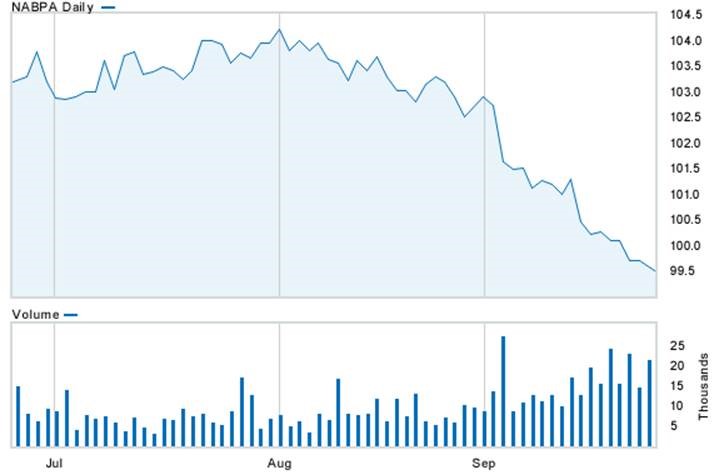Hybrids of the major banks to be downgraded
‘New style’ hybrids really are a hot topic at the moment, and not for the right reasons. You do not have to be a keen market observer to have noticed all the press lately surrounding hybrids, in particular the ‘new style’ contingent convertible Basel III compliant securities (aka ‘Cocos’).
FIIG have been particularly vocal in this space. In fact, if you weren’t aware, FIIG made the decision a few weeks back to no longer deal in these securities to our clients. FIIG considers these ‘new style’ hybrids as equity securities and not debt securities, as they are more often than not marketed. We define equity hybrid securities as securities that contain clauses enabling them to be converted to equity without the investors’ consent. In short, the investor’s hard-earned funds are being bailed-in to bailout the banks in times of stress. You can read more about the risks of these bail-in hybrids here.
For investors holding Cocos, the real icing on the cake appeared last week. On September 18th, Standard & Poor’s announced that they would be downgrading more than 80% of the world’s Cocos. Their concern, like ours, is that the timing of the conversion into equity is uncertain. Regulators could choose to act some time before the bank becomes “non-viable”. This is not a question of a bank actually being non-viable, but a question of at what point prior to that does the regulator choose to act.
Standard & Poor’s comments:
“[Regulatory] Frameworks are generally favoring a "bail-in" approach that increases the possibility of regulatory intervention before a bank's non-viability … to enforce loss absorption on hybrid capital instruments. This increases the likelihood of non-payment via coupon deferral or loss of principal that we would consider to be defaults on these instruments. We believe that regulators expect hybrid capital instruments to absorb losses at an earlier stage in the deterioration of a bank than previously, and that the timing of regulatory intervention is now less predictable”.
In their 29 page report issued last week, S&P released their new methodology for rating these securities. Our conclusion is that they will downgrade Australia’s major four banks’ hybrids by either 1 or 2 notches from their current ratings. There is a risk that this will knock many of the Australian Cocos into what is known as “sub-investment grade”, or euphemistically “junk”, at the very least, they will be the lowest investment grade level, which still poses a very real problem for investors.
The timing of the downgrade could be within the next two weeks. The impacted securities will be:
- NABPA
- NABPB
- WBCPD
- WBCPE
- CBAPC (Perls VI)
- CBAPD (Perls VII)
Yes, there are many more hybrids on the market than just the ones above. HOWEVER, these are the only rated Cocos and as such will be impacted immediately upon S&P revising their ratings.
The point? Investors don’t need to be concerned about S&P’s change in the rating per se, and some investors choose to ignore S&P’s ratings often for justifiable reasons. However, a downgrade to sub-investment grade will have knock on impacts that investors need to understand.
A downgrade of the major banks’ hybrids to the lowest investment grade level or worse, junk, will force a lot of investors to sell.
There are two reasons for this:
- Many fund managers’ mandates limit/prevent holding of securities that of the lowest investment grade level, and often completely prevent the holding of sub-investment grade securities. That means they will have to sell these securities either before the downgrade or immediately afterwards.
- Financial planners, whose clients are major holders of these securities, are required to only use investments on their licensee’s “approved product list”. This list typically prohibits holding securities that are less than a certain credit quality, there is a very good chance that the above securities will below the approved threshold.
Such a high volume of forced sellers will put downward pricing pressure on these hybrids. This is precisely the point I made in an article I wrote earlier this month, ‘The risk of new "bail-in" hybrids’. It is not that we are concerned about the viability of any bank in Australia at present. It is that these new securities are engineered for a specific purpose, namely to be used to “bail-in” capital in the event that the banking regulator becomes concerned. This is a post-GFC device that, as yet, is untested. Markets do not know how to price this risk and regulators are still shifting their rhetoric around how they will use their right to force conversion.
Australian investors have invested a total of $20 billion into equity hybrids, including the recent record-breaking $2.6bn CBA hybrid PERLS VII. The recent CBA PERLS issue was done at 2.8% over BBSW (being about 5.4%pa). Bank hybrids in Europe are trading at around double this level, but even if at the lowest end of the European range, the CBA deal should have been around 400bps over (or 6.6%pa). If the Australian hybrids corrected to that sort of yield, their price would fall to $95-96. Australian investors are NOT receiving a fair trade off for risk vs reward compared to their overseas brethren.
Still don’t believe that price volatility is picking up in this space? Have a look at the NABPA chart for example. They are now at par or below, down from $104 last month.
In an email I sent to all clients, ‘UK Banks banned from issuing hybrids to retail investors’,dated 8th August, I noted that “If ASIC does follow the FCA’s decision and there is a flurry for the door, you may find that current hybrids begin to trade a lot lower than they currently are”. Now this does not seem to be the risk. The rating agencies have moved a lot faster than the regulator – downgrades WILL impact the quoted price on the ASX. There is only one way to exit these, and it is on market.
I think investors in these rated ASX listed Cocos need to seriously assess now whether they wish to continue to hold these securities knowing that price volatility is a very real concern along with all the other intrinsic risks that FIIG have been highlighting over the past months. Are you still happy to hold what should really be a capital stable fixed income investment, but in reality is going to behave far more like equity? Are you willing to watch your capital erode if a large portion of the market all run for the same exit at one time? Two important questions that need considering – and fast.
At the start of this article, I mentioned “…hybrids really are a hot topic at the moment”. I think they are about to become more like ‘hot potatoes’, those who hold the hot potato last will get burnt. FIIG saw similar features not so long ago with CDOs, which banks were selling like hotcakes and the market was lapping them up, FIIG elected to stay away from these securities too. Eventually these risks will result in losses to investors in equity hybrids - it may take some time (even years) but it will happen.
FIIG’s strategy is very simple - to create access to Fixed Income investments that our clients can trust. Fixed Income means debt cascading down the risk spectrum from deposits to debt hybrids. This means we do not market assets/securities that are outside our chosen asset class or our core competency including equity or equity hybrids. This is an important decision for us, one that we are proud of, as it will help to demonstrate to our clients, media and critics that we have integrity and won't compromise on the equity/debt classification – and ultimately what we believe is the right thing to do by the people that trust us most, our clients.
In this week’s WIRE, FIIG’s Head of Portfolio Services, Ryan Poth, discusses hybrids in depth and talks about what options are available to switch to should you decide that Cocos are not appropriate for your fixed income portfolio. You can read the article here.
Ultimately there are many switch options that are available. It really is a conversation that needs to be had on an individual level. What OTC bonds are appropriate for your fixed income portfolio will depend on whether you want fixed, floating or inflation linked exposure, or a balance of all three. What target yield you want to achieve from your portfolio. Whether you are comfortable with senior unrated high-yielding bonds or prefer to really de-risk and take on an investment grade portfolio of bonds. To have this conversation about what alternative bonds are available, please contact me directly on my details below. Email or phone is fine.
I do hope that this email has been clear and concise about the risks of hybrids and more importantly, you are clear on the inevitable re-rating of these instruments by S&P and what impact this will have on your holdings, should you hold any of the ASX listed and rated Basel III compliant hybrids.
If you would like to discuss anything at all in regards to this article, as always, I am happy to make time for you.
Angus Knight
angusk@fiig.com.au
61 2 9697 8723













